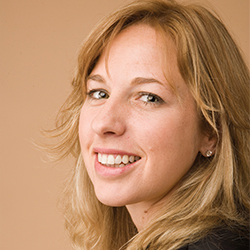 This month we profile Maite Quinn, business development and marketing manager for Sims Municipal Recycling.
This month we profile Maite Quinn, business development and marketing manager for Sims Municipal Recycling.
When and why did Sims Metal Management launch Sims Municipal Recycling (SMR), a subsidiary focused on the processing and marketing of residential recyclables?
In 2003 the city of New York stopped recycling residential glass and plastic because the overall cost was higher than disposal. Because we were in the business of finding value from scrap metal, we began to research the glass and plastic markets and believed that we had the experience and skills to effectively process and market these materials in order to make money and give the city a better tip fee. After winning a series of short term bids and helping the city bring glass and plastics back into the recycling stream we eventually, in 2009, won a 20-year contract to recycle all of the New York City’s plastics, metal, glass and about half of their paper.
When did you start working with SMR and what do you do? Has your role changed over time?
I started working for SMR in 2010 as the Business Development and Marketing Manager. Overall my role has stayed the same, but the business has grown substantially so I am buying and marketing more than double the amount of material than when I first started. I am now leading SMR’s participation in various trade organizations such as the Institute of Scrap Recycling Industries and the Association of Post-consumer Plastic Recyclers.
What did you do before working for SMR?
I was a television documentary producer for eight years and then I worked at the largest private hauling and recycling company in New York City where I became President. Unfortunately that business folded with the collapse of the markets in 2009.
Tell us about SMR’s facility in Brooklyn, N.Y. and how it is unique to other materials recovery facilities (MRFs) in the United States.
The Sunset Park MRF on the Brooklyn waterfront opened in December 2013. SMR managed construction of the new 11-acre recycling center from 2010 to 2013. It is the largest commingled MRF in the United States with 16 optical sorters. We process about 1,000 tons of material at the site daily and use barges and rail for moving the majority of material in and out of the facility. It has one of the best recycling education centers I have seen, a large wind turbine, and one of New York City’s largest solar installations.
In addition to working with the city of New York, SMR also handles curbside-collected materials for a portion of the city of Chicago and a number of New Jersey municipalities. Are there plans for SMR to expand its footprint to other regions of the United States?
Yes, we are actively bidding on contracts across the country.
When asked where you expected to be in five years in your Crain’s New York Business magazine’s profile in 2007, you said you would be running the largest recycling company on the east coast. This is not far from the truth, what is in store for five years from now?
Well I’m not in charge, that is Tom Outerbridge, but I most certainly am involved with the largest recycling company on the east coast. Hopefully five years from now SMR will be one of the largest curbside recycling companies in the country.
With commodity markets depressed over the last year and the continued light-weighting of packaging entering the curbside recycling stream, do you foresee any major shifts happening at a regional or local level with municipal recycling programs?
Yes. Many municipalities are already seeing that they are paying for recycling and that may be a continued trend. We are also seeing a number of smaller processors get out of the business of the harder-to-process and lower-value mixed recyclables.
As a company focused on the recyclability and commodity value of a broad variety of consumer products and packaging, do manufacturers often call upon SMR for their expertise when developing new products or trying to increase the recyclability of their product?
Yes all the time. Colgate Palmolive is coming to our facility tomorrow and Unilever was here last month. We are working towards closing the loop. By having conversations with designers of major packaging companies we are able to assure that what is being produced is capable of being recycled. We are also participating in these discussions via trade groups such as the Association of Postconsumer Plastic Recyclers and their working committees.
What book are you reading right now?
“When Kids Call the Shots”
You are a mom to three kids under five. What are you doing for Halloween?
Getting dressed up and going Trick-or-Treating!!!
Where is your go-to vacation spot?
Rincon, Puerto Rico.